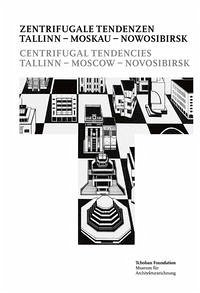It is a century ago to this year that the October Revolution of 1917 brought about an upheaval in society, politics and culture all over the world. The revolutionary character of the early Soviet regime, its communist ideas, the striving for accelerated industrialisation and the abolition of private property in land and buildings attracted many artists who, for ideological or economic reasons, were keen to take part in constructing a new society. At this time several avant-garde styles and theories arose that continued to influence and shape the art of the twentieth century. It was exactly in this period, the 1920s, that the term ‘Paper Architecture’ was used for the first time, initially as a somewhat derogatory term for projects that were too utopian to be built and only existed on paper. About sixty years later, during the stagnation of the Brezhnev era, the concept underwent a renaissance. After an eponymous exhibition in Moscow, it was used to designate a group of young architects whose works were not necessarily designed to be built, won awards at international competitions and stirred up the routine of the Soviet planning offices. The exhibition at the Museum of Architectural Drawing shows some fifty works from Tallinn, Moscow and Novosibirsk and illustrates the centrifugal tendencies towards international competitions which arose at that time.In diesem Jahr ist es genau 100 Jahre her, dass im Jahre 1917 die Oktoberrevolution einen Umbruch der gesellschaftlichen, politischen und kulturellen Situation auf der ganzen Welt bewirkte. Der revolutionäre Charakter des frühen sowjetischen Regimes, die kommunistischen Ideen, das Streben nach beschleunigter Industrialisierung und die Abschaffung des Privateigentums an Grund und Boden zogen viele Künstler an, die aus ideellen oder wirtschaftlichen Gründen mit großem Enthusiasmus am Aufbau der neuen Gesellschaft mitwirken wollten. In dieser Zeit entstanden einige avantgardistische Stilrichtungen und Theorien, die die Kunst des 20. Jahrhunderts nachhaltig beeinflusst und geprägt haben. Genau in dieser Zeit, in den 1920er Jahren, wurde der Begriff „Papierarchitektur“ zum ersten Mal verwendet, zunächst als eine etwas abfällige Bezeichnung für Projekte, die zu utopisch waren, um gebaut zu werden, und deren Existenz sich auf das Medium Papier beschränkte. Etwa 60 Jahre später, in der Stagnation der Breschnew-Ära erlebte dieser Begriff eine Renaissance und bezeichnete nach der gleichnamigen Ausstellung in Moskau jene Gruppe junger Architekten, die mit ihren Werken, die nicht unbedingt dazu bestimmt waren, jemals gebaut zu werden, Preise bei internationalen Wettbewerben gewannen und die Routine der sowjetischen Planungsbüros aufmischten. Die Ausstellung im Museum für Architekturzeichnung zeigt rund 50 Werke aus Tallinn, Moskau und Nowosibirsk, um diese zur gleichen Zeit entstandenen zentrifugalen Tendenzen in Richtung internationaler Wettbewerbe zu illustrieren.
